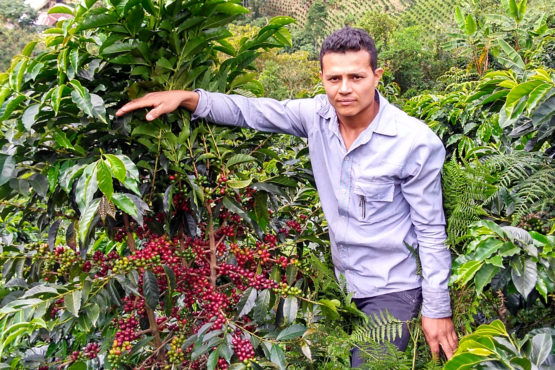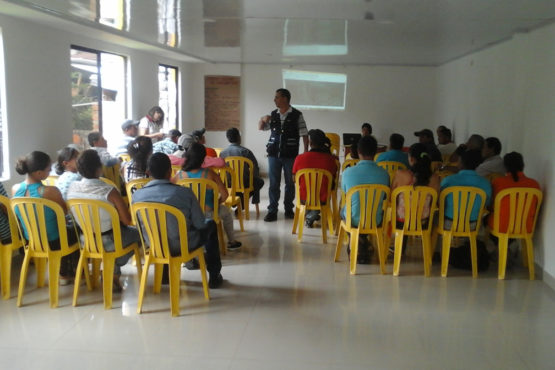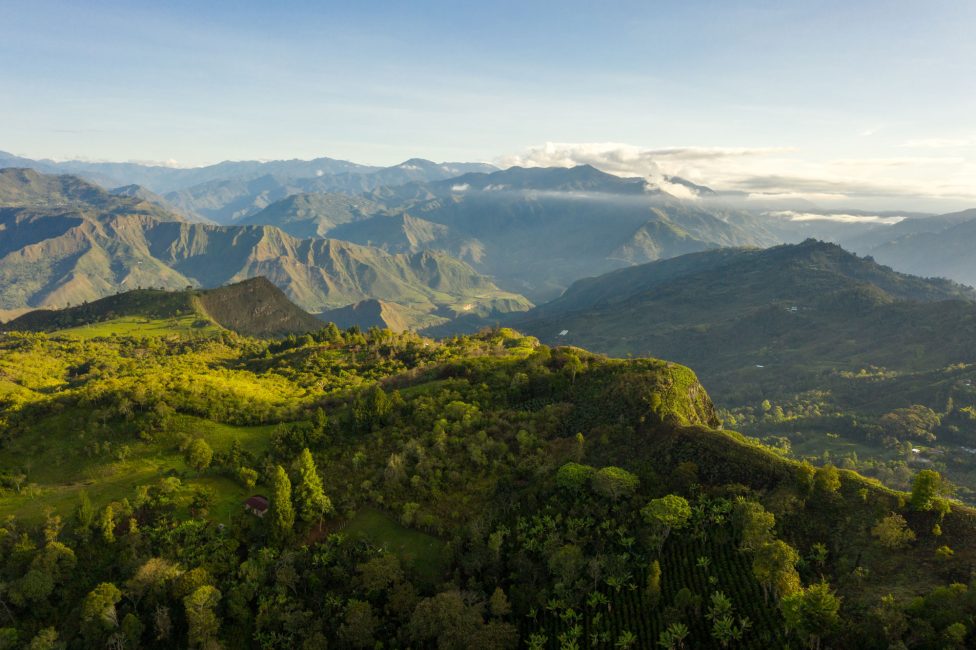Small Producers of Planadas
Golden syrup sweetness and a juicy body, with sultana, grilled peach and walnut. Balanced and clean with a cocoa powder finish.
This coffee comes from eight farms that are situated near the village of Planadas, which is in the municipality of La Cumbre in the Tolima growing region.
Planadas is a relatively new village that was new established in 1966. The first groups to settle the area were from Antioquia and Huila, and as a result, coffee soon became an important crop in the area. Today Planadas is a bustling commercial centre, where local farmers in the foothills of the Cordillera Central grow all types of produce for sale and distribution. High elevations, warm days and cool nights along with young, healthy trees all contribute to the exceptional quality coffee from this region.
This coffee comes from nine small farms located near the village of Planadas. The names of the farms are: Las Delicias, El Brilliante, Los Recuerdos, La Fortuna, La Esmeralda, Los Espejos, El Vidal and two farms that are called El Ventilador. Between them they have on average 2.5 hectares of coffee, and their farms sit at elevations between 1,650 and 1,980m above sea level. All of these farms are part of a project called Núcleo de Gestión de San Fermín’, and are a great example of of smallholders working together as a group to produce high quality coffee.
ABOUT NÚCLEO DE GESTIÓN DE SAN FERMÍN
‘Núcleo de Gestión de San Fermín’ is a project set up three years ago by our export partner InConexus. This project is aimed at strengthening small farms in the region that have the potential to produce exceptional coffee. InConexus have bought together nine farms in the project—all of which have contributed to this lot. By connecting the producers together, the idea is that they can build a supportive network to share and resolve joint challenges together, and also sell their coffees as collective. The group meets regularly, along with the InConexus team who provide support and training.
InConexus also provide a vital role in helping to identify high quality lots from these producers, and helping them place these coffees with international buyers (like MCM) at higher prices, which helps the producers gain economic sustainability through long-term relationships. The ultimate goal of this program is to improve the economic, environmental and social situation of their producing partners, whilst also increasing their quality, sustainability efforts, and inclusivity initiatives at a farm level.
By developing and nurturing these partnerships throughout the supply chain, InConexus believes that entire communities can be empowered. Individual growers can be encouraged to become better business owners, which in turn will result in higher-quality coffees, improved market access, and ultimately increased income and more sustainable and healthy livelihoods. We are proud to partner with InConexus and believe wholeheartedly in their mission.
ABOUT TOLIMA
Coffee from Tolima has been very difficult to access due to its isolation and instability. For many years the region has been under the control of Colombia’s notorious rebel group, the FARC, and as a result it has been unsafe and violent. Since 2012, safe access to this region has been possible as a result of peace talks between the Colombian government and the rebels. Since this time some stunning coffees from small producers have been discovered, mainly via cooperatives.
The word ‘Tolima’ comes from the local indigenous language and means a “river of snow or cloud”. The region sits on the Cordillera Central, in the middle of the three mountain ranges that provide a range of microclimates well-suited to high quality coffee production. Coffee is the leading agricultural activity in the region, followed by beans and cattle.
HOW THIS COFFEE WAS PROCESSED
This coffee was processed using the washed method at each farm’s ‘micro-beneficio’. The coffee was pulped using a small manual or electric pulper, and then placed into a fermentation tank, where it was fermented for up to 36 hours (depending on the weather). It was then carefully dried (over 10–18 days) – typically on parabolic beds, which are constructed a bit like a ‘hoop house’ greenhouse, that act to protect the coffee from the rain and prevent condensation dripping back onto the drying beans. These beds have adjustable walls to help with air flow, and temperature control to ensure the coffee can dry slowly and evenly. Once dry, the coffee is rested in parchment until it is ready for export.



